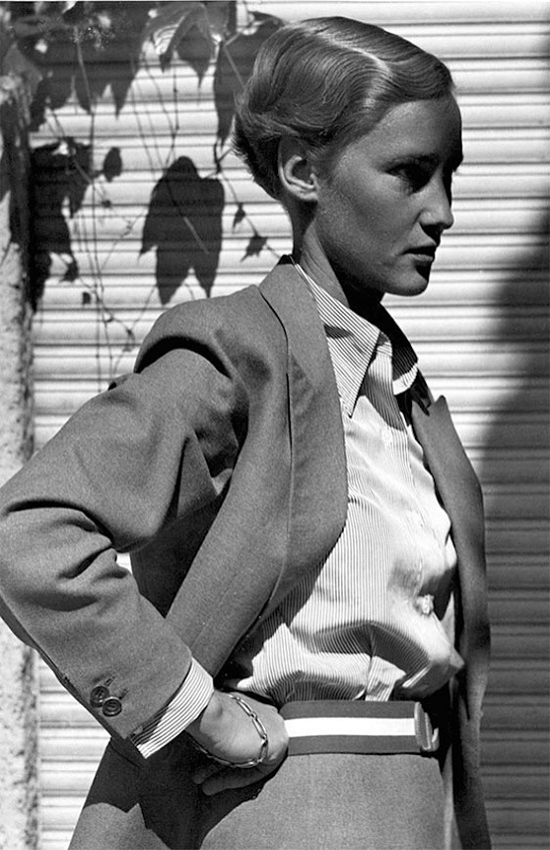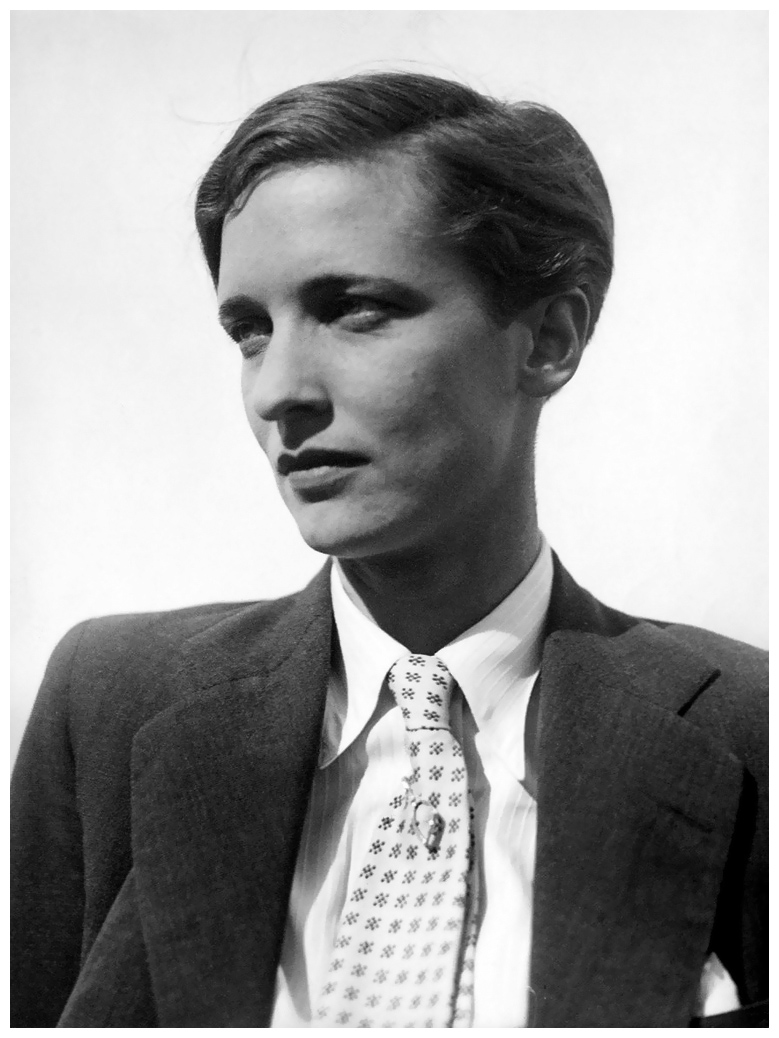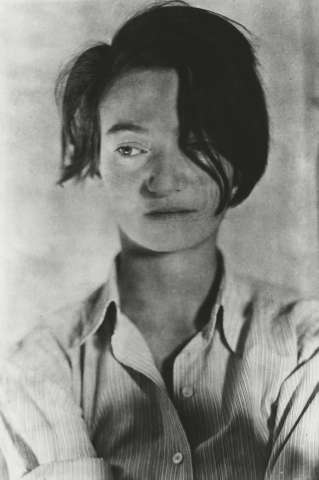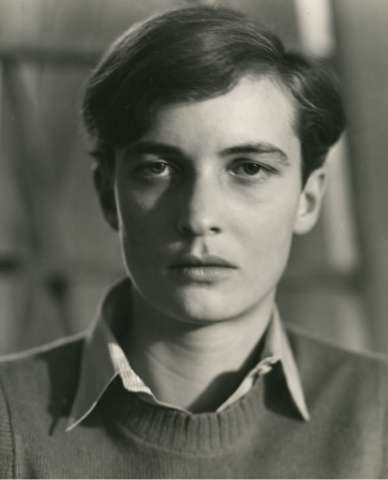MARIENNE Breslauer was a
dresser more snappy than you.
But who was she and what made
her such a formidable
example of a woman?

POWERLESS POWERDRESSING:

Marianne Breslauer is part of a whole generation of women who during the Weimar Republic, a political regime prior to Nazism, were able to devote themselves to photography, such as Lotte Jacobi, Germaine Krull, Grete Stern, Ellen Auerbach, or Ilse Bing. Despite her short career as a photographer, only eleven years between 1927 and 1938, Marianne Breslauer's legacy, with her portraits and photojournalism, is a unique example in the history of women in photography. The photographer was active in shooting fashion, advertising, travel, urban life, and portraits. What she was interested in capturing was reality, more precisely, the reality that is unimportant, and the reality that most people overlook. Her images capture an instant in a street. Sounds very poetic, doesn't it? Our photographer liked to combine reality with a bit of poetry in her work. Marianne Breslauer was not a photographer with a long career, as it was cut short by the coming to power of National Socialism in 1933, and she was forced into exile. But her peculiar way of looking was enough for her to be considered as the precursor of the so-called New Photography. Don't worry; we'll explain what it's all about later on.



A LITTLE GIRL NAMED MARIANNE.
Belonging to a family of the enlightened bourgeoisie of Jewish origin, Marianne Breslauer was born on November 20, 1909, in Berlin. She was the daughter of the architect Alfred Breslauer and Dorothea Lessing (daughter of the art historian Julius Lessing). She spent her childhood, adolescence, and school years in Rheinbabenallee, Berlin, in a villa built by her father. The artist grew up in a well-to-do bourgeois neighborhood next to the Grunewald woods and the Havel River.
Marianne was always interested in art. From an early age, she loved going to art museums. Marianne was raised and educated as a Christian ("I am not a Jewish woman," she said). Uninterested in conventional studies, she left school at the age of sixteen, without even finishing the educational programs. She was then sent to Switzerland, to the École Nouvelle Ménagère, in the small town of Jongny-Sur-Vevey on Lake Geneva. She was to study French and home economics, a bit old-fashioned but conventional at the time. He then began studying photography.
Today, photography is considered an artistic resource for reflection, research, or political intervention. But in the 1920s and 1930s, photography was seen as a pastime for wealthy people, a fashion that allowed them to be in the world, to relate. The bourgeois didn't have to worry; on the contrary, they were always turning in on themselves, while young artists without resources struggled to emerge from the darkness of poverty.
There is no doubt that for Marianne Breslauer it was something else, and she always wanted to devote herself to it, although life barely left her ten years of passion for photography. She was not able to work in that profession until several years later.
Lorem
Ipsum is
simply
dummy
text box

PARIS, THE CRADLE OF ART.
Her interest in photography began in 1925, after seeing an exhibition of Frieda Riess, a German portrait photographer in the 1920s, at the Galerie Flechtheimen. After a solid two-year training at Lette-Haus Breslauer, she traveled to Paris in 1929 where she met Man Ray, an avant-garde artist, who immediately encouraged her to pursue her own photographic ideals.
Marianne was a student of Man Ray's for a brief period but which marked her later photography. The young woman entered his studio in Paris, whose rayograms of his early days in the French capital, images made without a camera, and his adherence to surrealism, had made him well known in artistic circles.
In those years, many photographers, including many Americans, chose Paris as a place to build their world and succeed: Kertész, Brassaï, Paul Outerbridge, George Hoyningen-Huene, Germaine Krull, Ergy Landau, Berenice Abbot, and Lee Miller, coincided there. The French capital bustles with activity, but Breslauer is not attracted by the glittering Parisian parties (although she goes to them!), nor by the boastfulness of those who boast of social relations.
She was interested in the vagabond life on the banks of the Seine, and the exclusive atmosphere of the race on the world youth day and the vanity trade. Popular scenes, corners of marginalization, characters living on the rough margins of existence, excite the imagination of photographers.
In Paris, like many young contemporary photographers, Breslauer admired the work of André Kertész and Brassaï, whose aesthetic terms his own photographs approached. Brassaï, for example, obsessively walked the Parisian streets at nightfall, and captured in his Paris de nuit (in collaboration with Paul Morand's text) the dangerous neighborhoods, the sinister streets, the corners of whores, drug addicts and inverts, as the hypocritical bourgeoisie of the time called homosexuals. Marianne captured the "intimate city", but she did not photograph monuments.
But later, the artist was approaching the artistic tendencies of the New Vision movement, which was attracting a lot of attention in the circle close to the Deutsche Werkbund and the Bauhaus.
THE NEW PHOTOGRAPHY OR NEW VISION?
Her interest in photography began in 1925, after seeing an exhibition of Frieda Riess, a German portrait photographer in the 1920s, at the Galerie Flechtheimen. After a solid two-year training at Lette-Haus Breslauer, she traveled to Paris in 1929 where she met Man Ray, an avant-garde artist, who immediately encouraged her to pursue her own photographic ideals.
Marianne was a student of Man Ray's for a brief period but which marked her later photography. The young woman entered his studio in Paris, whose rayograms of his early days in the French capital, images made without a camera, and his adherence to surrealism, had made him well known in artistic circles.
In those years, many photographers, including many Americans, chose Paris as a place to build their world and succeed: Kertész, Brassaï, Paul Outerbridge, George Hoyningen-Huene, Germaine Krull, Ergy Landau, Berenice Abbot, and Lee Miller, coincided there. The French capital bustles with activity, but Breslauer is not attracted by the glittering Parisian parties (although she goes to them!), nor by the boastfulness of those who boast of social relations.
She was interested in the vagabond life on the banks of the Seine, and the exclusive atmosphere of the race on the world youth day and the vanity trade. Popular scenes, corners of marginalization, characters living on the rough margins of existence, excite the imagination of photographers.
In Paris, like many young contemporary photographers, Breslauer admired the work of André Kertész and Brassaï, whose aesthetic terms his own photographs approached. Brassaï, for example, obsessively walked the Parisian streets at nightfall, and captured in his Paris de nuit (in collaboration with Paul Morand's text) the dangerous neighborhoods, the sinister streets, the corners of whores, drug addicts and inverts, as the hypocritical bourgeoisie of the time called homosexuals. Marianne captured the "intimate city", but she did not photograph monuments.
But later, the artist was approaching the artistic tendencies of the New Vision movement, which was attracting a lot of attention in the circle close to the Deutsche Werkbund and the Bauhaus.
Lorem
Ipsum is
simply
dummy
text box

THE PRESS AT THE TIME OF WAR
The period between the two world wars witnessed on the one hand the development of advertising and the illustrated press, and on the other the rise of avant-garde photography. This impulse promoted an expansion of the market for images and helped the modernization of photography as a profession. Thus, photography became an attractive career for women in search of social and economic independence, and a freelance job for various magazines, magazines, or books.
In 1927, with Germany in depression after World War I, Marianne managed to take advantage of the situation and started working in different press agencies. Marianne's photographs explore that particular moment of modernity and the rise of women as professional photographers. In interwar Europe, Marianne was a determined and free young woman in Paris. But what she didn't know was that those years were the dangerous transition from the Weimar Republic to Nazism.
Lorem
Ipsum is
simply
dummy
text box

THELMA AND LOUIS GO TO SPAIN.
In 1933 the German agency Academia commissioned Marianne a job that took her to travel through Gerona, Barcelona, Sant Cugat, Montserrat, the Pyrenees, Pamplona, and San Sebastian. She made this trip in the company of the Swiss writer and journalist Annemarie Schwarzenbach. They met in 1932, and a year later they decided to travel together like Thelma and Louis between the wars. The tour was to be financed by the sale of articles and press photos.
The friends decided to make this trip together with the intention of taking photographs and writing. After all, they were barely twenty-five years old, they were the "new women", with their short hair, and they were self-confident, daring, and cosmopolitan, emancipated, and practiced as such. They were conflicted women who made an impact at the time because of the freedom with which they lived their lives.
Annemarie was a free woman who dedicated herself to writing and traveling, until she married a French diplomat in 1935, in Iran. Although married to Claude Clarac, she had affairs with other women. She was a young woman of singular beauty and tormented. She was defined as a "devastated angel". Marianne Breslauer took the most photographs of her: in her words, Annemarie was "the most beautiful being she had ever seen", although her beauty "made her lonely", and she was, moreover, a "very lonely and unhappy" woman.
We already know a little more about Annemarie, now let's go back to the trip to Spain. The purpose of the trip was Pamplona, unlike most travelers of the time, who preferred Andalusia, no doubt because of the myth of hot women, because of the stories of bullfighters and men in love and violent men that Mérimée and Bizet had put into circulation in the second half of the nineteenth century. However, they were moved by their interest in Hemingway, whose novel "The sun also rises" had been translated into German in 1928, to great public acclaim, and they wanted to emulate Jake Barnes in the Sanfermines.
They were also influenced by Kurt Tucholsky (the author of "A picture says more than a thousand words"), and his work "Ein Pyrenäenbuch". It was a travel diary that took him to Loyola and Roncesvalles and to towns in the French Pyrenees, where he documented the backwardness of the Spanish countryside and its peculiar customs. In search of all that, and of Hemingway's Pamplona, Marianne and Annemarie traveled.


